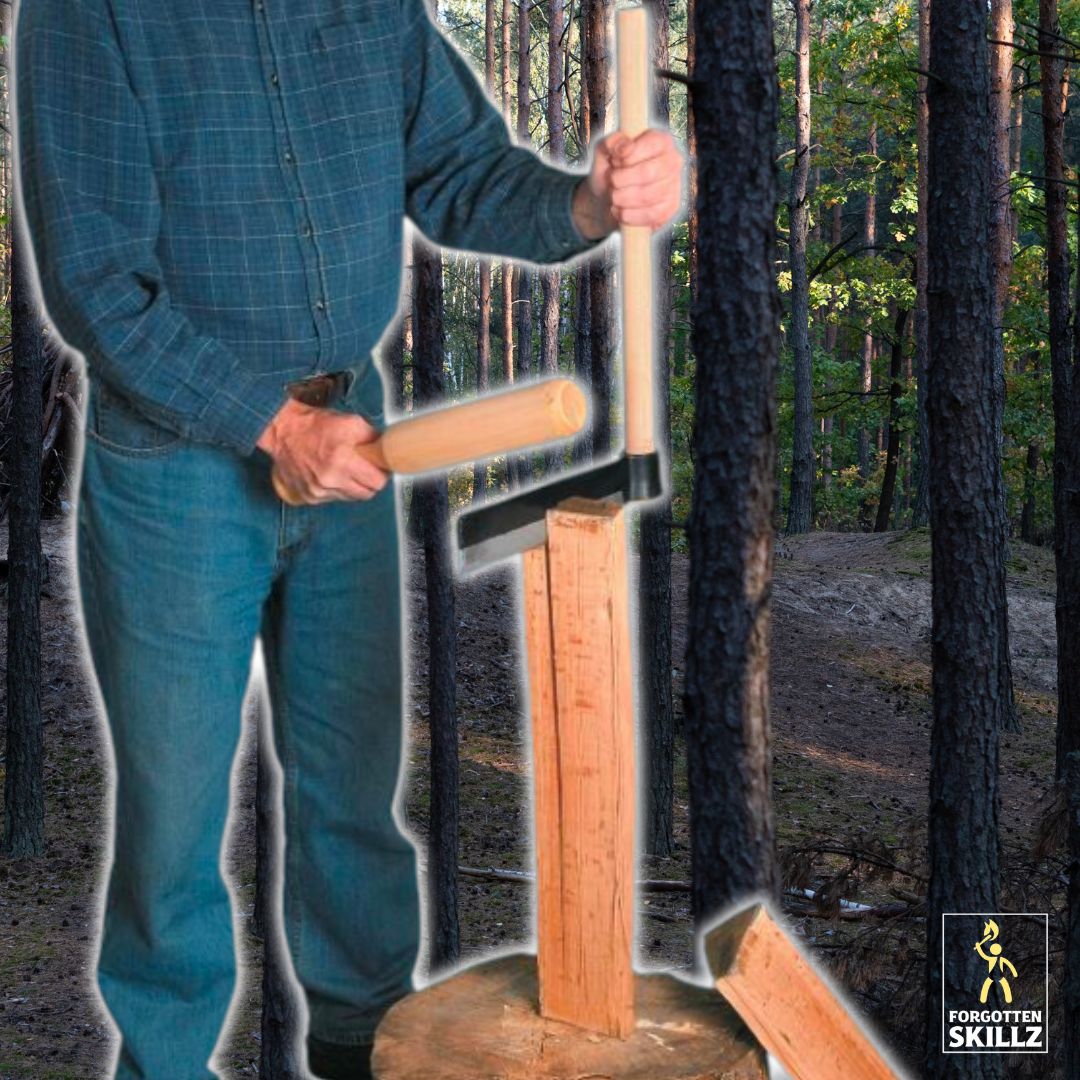Generalism and Self-Sufficiency Through Old World Skills
Meet the Froe!

In recent years, there has been a resurgence in the pursuit of self-sufficiency. Many enthusiasts are turning to skills and crafts that were once commonplace in society but have since been largely replaced by modern technology. One such craft is woodworking. From creating functional items around the home to crafting tools for bushcraft and survival, woodworking offers a range of practical benefits. Many self-sufficiency advocates find joy and satisfaction in crafting their own tools, furniture, and accessories using traditional woodworking tools. While modern power tools can expedite the woodworking process, there is an undeniable charm in using hand tools that have stood the test of time. Tools such as the froe are not just tools but pieces of history that connect the woodworker to ancient craftspeople.
The froe is an ancient and unique woodworking tool that has played a critical role in the history of woodcraft. Dating back at least five thousand years, the froe’s origins can be traced to ancient Egypt, where it was called a “fres.” Over time, it evolved from a stone wedge with a handle to a hardwood wedge with embedded steel rondels and a long wooden handle, eventually becoming known throughout Europe as the froe1.
During the Middle Ages, the froe underwent further evolution in its shape, leading to the design we see today. In the Italian Renaissance period, blacksmiths and woodworkers took the froe’s design to new levels of sophistication. The world-renowned Italian sculptor Michelangelo is believed to have used the froe for some of his most famous works, including David and his Pietà sculptures. Prominent French furniture makers, such as Andre Charles Boulle, based many of their designs on intricate patterns made with a froe.
In North America during Colonial Times and up until recently, the froe’s simple yet effective design remained largely unchanged. It was widely used on American plantations for splitting logs for firewood, and gained the nickname “Middleboard Tool” due to its use in making boards out of logs by splitting them down their middle in one swift blow.
Today, the froe continues to be an essential tool in woodworking, used for splitting wood and shaping wooden boards and logs. Despite the emergence of more sophisticated tools for similar tasks, such as band saws, circular saws, and chop saws, the froe remains unparalleled when it comes to accuracy and reliability when working with wood.
The froe consists of a durable steel blade attached to a wooden handle. It is one of the only tools capable of making split wood planks, which are necessary for some carpentry projects. The froe does not get blunt as quickly as other tools and can be used over long periods of time and across many projects, making it one of the most important tools needed for many traditional carpentry projects.
There are several types of froes, each with specific uses. The most common type is the Standard Froe, which has a flat blade with parallel edges and is used for splitting small pieces of lumber and splitting boards along their grain. The Varved Froe has two distinct slots in its blade that aid in cutting thin pieces of lumber across the grain. The Multi-Froe has multiple blades set at various angles to cut accurately along any grain pattern or curved surfaces. The Drawknife Froe is designed for shaping small pieces of wood, making it great for curves, joints, and other intricate detail work. The Lying-Froe features a long blade that assists in raising wheel spokes or taking down the knots found when resizing posts and beams.
Using the froe involves skilfully striking it with a heavy hammer at an angle. This process can be daunting or even dangerous when trying to create split wood planks correctly. However, with practice and caution, it can become an efficient and reliable process.
The Froe Woodworking Tool has many uses in hobby activities and business. For hobbyists, it can be used to craft birdhouses or wooden signs, cut decorative pieces from thin strips of wood, or make wooden boxes and other crafts with precision lines or shapes. In business, it can be used for knocking down lumps on furniture pieces instead of sanding them away by hand, constructing roof trusses in timber framing applications, and log cabin construction. The froe is also essential for firewood splitting, as its design enables the user to apply greater force than what could be achieved with an axe alone. This means that logs can be chopped up quickly with less effort than normal.
Although the froe is a traditional tool, it still holds its own in modern woodworking. Its unique capacity to split wood along its grain makes it a valuable tool for many woodworking projects. The froe is particularly useful in tasks requiring precision and attention to detail, such as making paneling and shingling details in many woodworking projects.
The froe’s durability, versatility, and historical significance make it a fascinating tool. Its enduring presence in woodworking, despite the advent of modern machinery, speaks to its effectiveness and the special role it plays in the craft. Whether you’re a hobbyist working on a small project or a professional working in a commercial setting, the froe is a tool that can greatly contribute to the quality and authenticity of your woodworking projects.
